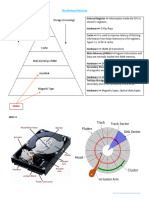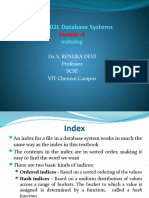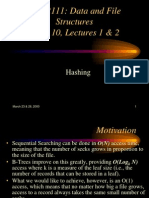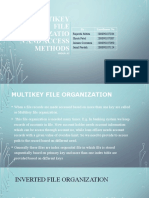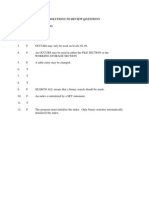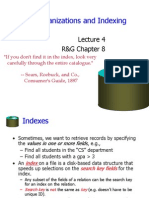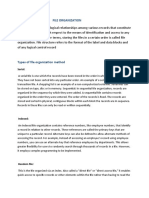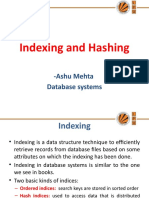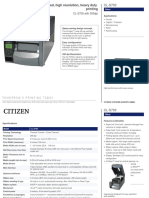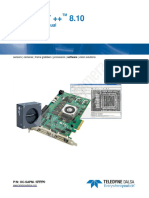0% found this document useful (0 votes)
60 views4 pagesFile Searching Using Variable Length Keys (Biandais 1959)
The document discusses techniques for locating records stored in slower computer memory that are identified by variable length keys. It describes using an index of key words and locations that is searched to find records. For larger datasets, it proposes a 'bucket method' of randomizing keys to distribute records evenly throughout memory for more efficient searching.
Uploaded by
tsmmhp8jdj4sxf8hopcCopyright
© © All Rights Reserved
We take content rights seriously. If you suspect this is your content, claim it here.
Available Formats
Download as PDF, TXT or read online on Scribd
0% found this document useful (0 votes)
60 views4 pagesFile Searching Using Variable Length Keys (Biandais 1959)
The document discusses techniques for locating records stored in slower computer memory that are identified by variable length keys. It describes using an index of key words and locations that is searched to find records. For larger datasets, it proposes a 'bucket method' of randomizing keys to distribute records evenly throughout memory for more efficient searching.
Uploaded by
tsmmhp8jdj4sxf8hopcCopyright
© © All Rights Reserved
We take content rights seriously. If you suspect this is your content, claim it here.
Available Formats
Download as PDF, TXT or read online on Scribd
/ 4













